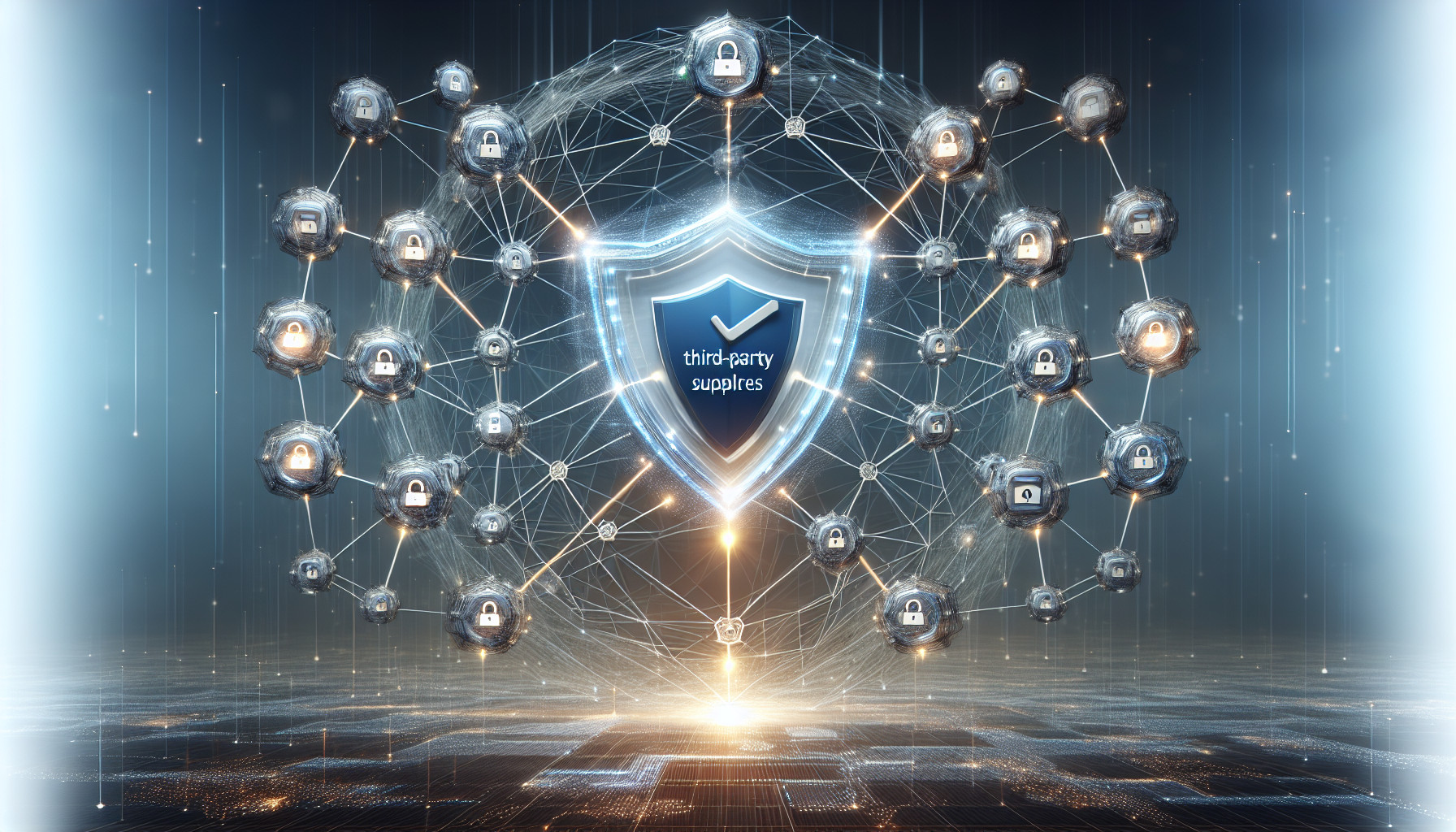
If you aim for ISO 27001 compliance, you know documentation is at its core. This article breaks down the ISO 27001 document requirements, offering a clear roadmap for creating and managing these crucial papers. Explore practical strategies for documentation that align with the ISO standards and enhance your information security measures, all without a sales pitch.
Key Points
-
ISO 27001 documentation is evidence of an organisation’s information security commitment and is essential for compliance, requiring specific documents such as the Information Security Policy and Risk Treatment Plan.
-
Mandatory documents guide the journey to ISO 27001 certification, with any omissions leading to non-conformity, potentially delaying certification; additional documents like supplier security policies can enhance ISMS robustness.
-
Achieving full ISO 27001 compliance involves more than mandatory documentation; secure system engineering principles, training records, access control policies, and leveraging documentation toolkits and technology are vital to building a comprehensive ISMS.
Understanding ISO 27001 Required Documentation

ISO 27001 documentation is the backbone of any organisation’s information security. It’s the tangible proof of your commitment to safeguarding sensitive data, showcasing the efficacy of your security controls during audits, and facilitating the management of security events. The ISO 27001 standard mandates specific compliance documentation to aid in audits, including:
- Information security policy
- Risk assessment and treatment methodology
- Statement of applicability
- Risk treatment plan
- Business continuity procedures
But what happens if you fail to document an action or operating procedure as per ISO 27001 standards? It’s as good as non-existent within the framework, significantly jeopardising your compliance efforts.
Defining the Scope of the ISMS
When you define the scope of your ISMS, you essentially delineate the boundaries of your information security ‘castle’, indicating to stakeholders the particular business areas and user activities that the ISMS covers. But how do you determine this boundary? It starts with:

- Identifying the information intended for protection
- Outlining the specific areas of the business covered by the ISMS
- Assessing security objectives and risks
Just as a castle’s defences would align with a royal strategy, so should the scope of your ISMS coincide with your business objectives. This alignment ensures that your information security measures harmonise with the organisation’s overarching goals and contribute to its strategic vision.
Crafting Information Security Policy
Beyond just access control, a comprehensive information security policy should encompass various aspects to protect your organization’s information assets effectively. Here’s a breakdown of key elements:
1. Purpose and Scope:
- Clearly state the policy’s objective and applicability: Protecting sensitive information across all company systems and data.
- Define the types of information covered: Trade secrets, customer data, financial records, etc.
- Specify the target audience: Employees, contractors, third-party vendors.
2. Commitment and Responsibilities:
- Highlight top management’s commitment to information security.
- Define roles and responsibilities for security: CISO, IT/Security teams, data owners.
- Outline employee responsibilities and expected behavior regarding information security.
3. Security Principles and Standards:
- Establish guiding principles: Confidentiality, Integrity, Availability (CIA triad).
- Reference relevant industry standards and regulations (e.g., ISO 27001, HIPAA).
- Specify acceptable use of equipment and resources (laptops, mobile devices, social media).
4. Access Control Management:
- Password Policy: Minimum length, complexity requirements, regular changes, account lockouts.
- User Access Control: Granting least privilege, role-based access controls, separation of duties.
- Network Security: Firewalls, intrusion detection/prevention systems, data encryption.
- Endpoint Security: Anti-virus/malware software, device encryption, patching policies.
- Physical Security: Access control to buildings, data centers, storage devices.
5. Incident Response and Management:
- Define procedures for identifying, reporting, and resolving security incidents.
- Establish communication channels for alerting relevant personnel and authorities.
- Outline data breach notification plan and recovery procedures.
6. Awareness and Training:
- Regular security awareness training for all employees on common threats and best practices.
- Specific training for IT personnel and data handlers on technical security measures.
- Phishing simulations and mock incidents to test employee preparedness.
7. Monitoring and Review:
- Continuously monitor system logs and activity for suspicious behavior.
- Conduct regular risk assessments and vulnerability scans to identify and mitigate threats.
- Update the policy periodically to reflect changes in technology, threats, and regulations.
ISO 27001 Mandatory Documents for Compliance

Just as a map guides a journey, so do the mandatory documents suggest a trip through ISO 27001 documentation. These are your compass points, guiding you through the certification process. Essential documents required for ISO 27001 compliance include:
- Risk Assessment Report & Risk Treatment Plan
- Internal Audit Program & Management Review
- ISMS Scope
- Information Security Policy
- Additional documents crucial for the establishment and operation of the ISMS.
Any omissions in these mandatory ISO 27001 documents could result in substantial non-conformity, which could, in turn, delay the certification process and affect statutory regulatory and contractual requirements. To bridge such gaps and ensure comprehensive compliance, organisations can use check sheets or specialised platforms such as Compleye, offering guidance and tools to manage these essential documents effectively.
Risk Assessment Report & Risk Treatment Plan
Your information security risk assessment report should serve as a comprehensive health check-up for your ISMS. It identifies and assesses potential risks, laying the foundation for your information security risk treatment disaster recovery plan. The report provides information on:

- The methodology used for information security risk assessments
- The coverage of information assets
- Identified risks
- The probability of their occurrence
- Findings that offer insights into the risk profile
It includes comprehensive details on these aspects, ensuring documented information is well-presented and easily accessible.
You create your risk treatment plan once you have your risk assessment report. This plan, which includes the risk treatment process clause, is a strategic response to the findings of your risk assessment, outlining the selected risk treatment options for each identified risk along with timelines, resources, and other relevant details.
Internal Audit Program & Management Review
An internal audit program acts as a personal trainer for your ISMS, maintaining continuous compliance with ISO 27001 standards and fostering continual process enhancement within the organisation. The internal audit program document showcases your organisation’s compliance with ISO 27001 and commitment to corrective action to maintain this compliance. The internal audit report contains various audit findings. These include documentation reviews, interview summaries with staff, and follow-up actions.
Following the internal audit, a management review provides top management with evidence that the implemented ISMS remains effective, transparent, and integral. The results of the management review act as tangible evidence of decisions, recommendations, and corrective actions made, improving the visibility of progress and demonstrating leadership’s commitment to continuous improvement.
Navigating Annex A: Selecting Appropriate Controls
Annex A of ISO 27001 is a veritable treasure trove of essential clauses for achieving compliance. It encompasses a range of controls categorised into 14 control sets, including:
-
Information Security Policies
-
Organisation of Information Security
-
Human Resources
-
Asset Management
-
Access Control
-
Cryptography
-
Physical and Environmental Security
-
Operations Security
-
Communications Security
-
System Acquisition, Development, and Maintenance
-
Supplier Relationships
-
Information Security Incident Management
-
Information Security Aspects of Business Continuity Management
-
Compliance
But how do you choose the proper controls for your organisation from Annex A? The answer lies in viewing Annex A as a catalogue of security controls and selecting the relevant controls based on your risk assessments and specific risks.
Implementing ISO 27001 Annex A controls involves selecting the appropriate controls from the 114 controls divided into 14 domains. This selection is based on your risk assessment and risk treatment plan.
Additional Documents to Strengthen Your Information Security Management System (ISMS)
To strengthen your ISMS, contemplate extending beyond the mandatory documents. Additional documents, such as supplier regulatory and contractual requirements, security policy and agreements, incident management procedures, and business continuity plans, can enhance the robustness of your ISMS.
An information security management system (ISMS) supplier security policy, for instance, safeguards the organisation’s valuable assets that may be impacted by or accessible to its network services suppliers. Moreover, your incident management procedure systematically identifies analyses, and responds to security incidents and manages them to mitigate their impact.
Supplier Security Policy & Agreements

Supplier security policies and agreements function as gatekeepers for your organisation, tackling third-party risks linked to suppliers who might access or affect your organisation’s information or assets. Essential elements of a Supplier Security Policy in ISO 27001 encompass security roles, supplier segmentation, supplier selection, supplier management, supplier exit, and control over acceptable use of assets and information assets related to suppliers.
Implementing a Supplier Security Policy involves:
-
Consulting Annex A.15.1 of ISO 27001 explicitly addresses information security in supplier relationships.
-
Identifying and evaluating suppliers.
-
Performing due diligence.
-
Setting security standards for each supplier.
Incident Management Procedure & Business Continuity Plans
An incident management procedure within an ISMS resembles a fire drill for your organisation – it’s a systematic strategy designed to:
-
Identify
-
Analyse
-
Respond
-
Manage security incidents to lessen their impact.
Meanwhile, business continuity plans are your organisation’s safety nets, handling disruptions or disasters to ensure the continuous flow of business operations.
To align a business continuity plan with ISO 27001, focus on the following:
-
Creating version control and document mark-up
-
Writing the policy purpose
-
Defining the scope of the policy
-
Identifying the principle on which the policy is based
Both incident management procedures and business continuity plans play a crucial role in upholding ISO 27001 compliance, guaranteeing the uninterrupted flow of business operations and adherence to the necessary operating procedures for maintaining the required standard.
Practical Steps to Document Creation and Maintenance
While the creation and maintenance of ISO 27001 documentation might appear challenging, adopting the correct steps can streamline the process. The journey starts with:
-
Assembling a team
-
Conducting a gap analysis and risk assessment
-
Applying security controls
-
Creating documentation
-
Performing staff awareness
-
Implementing strict guidelines
-
Ensuring well-trained employees
You can utilise a documentation toolkit for ISO 27001, which comprises templates, policies, and procedures designed to facilitate the swift and efficient implementation of acceptable use of ISO 27001 by organisations. Likewise, leveraging technology in document management for ISO 27001 can optimise the compliance process, enhance efficiency and effectiveness, and offer functionalities for document management and organisation.
Utilising a Documentation Toolkit
A documentation toolkit for ISO 27001 acts as a survival kit for your journey through ISO 27001 documentation. It offers pre-built document templates and guides that address the necessary documents for ISO 27001 compliance, saving time and effort and ensuring adherence to ISO 27001:2013.
Follow recommended best practices to optimise the use of a documentation toolkit in ISO 27001. Utilise the templates, policies, and procedures provided to expedite the standard implementation. This approach not only saves time but also mitigates non-compliance risks.
Leveraging Technology for Document Management

Utilising technology for document management equates to having a personal assistant to manage your ISO 27001 documents. Technology can significantly improve version control in document management by offering automated tools for tracking and managing versions over time, enabling real-time editing for collaboration, and ensuring systematic recording and management of every change.
Utilising document management software for ISO 27001 compliance provides numerous benefits, such as:
-
Facilitating remote work
-
Improving document security
-
Enabling efficient document searches
-
Optimising compliance procedures
-
Offering scalable solutions for organisations of various sizes
-
Potentially reducing costs.
Achieving Full Compliance: Beyond Mandatory Documents
ISO 27001 compliance transcends merely ticking boxes – it involves constructing a fortress of information security. Achieving full compliance goes beyond the mandatory documents. Implementing secure system engineering principles, maintaining thorough training records, and comprehensive access control policies can fortify your ISMS.
Automation tools and cloud services provide a comprehensive solution for:
-
Tracking risk assessment and remediation activities
-
Policy management
-
Security training
-
Endpoint protection
-
Infrastructure inventory management
-
Vulnerability management
These tools enable collaborative work across various teams through a unified dashboard, ensuring compliant processes and simplifying the path to compliance.
Secure System Engineering Principles

Secure system engineering principles function as the architectural blueprints for your ISMS, directing the design, deployment, and implementation of secure systems and practices. Applying these secure areas and principles ensures resilience strategies and adopts secure architecture principles such as security by design, defence in depth, failure securely, and distrust of external inputs.
Implementing these principles involves:
-
Developing layered protections
-
Establishing a sound security policy and controls
-
Incorporating security requirements throughout the system development life cycle
-
Managing both physical and logical security.
Training Records & Access Control Policies
Keeping training records equates to maintaining a log of your organisation’s learning journey. These records evaluate employee competency, identify training requirements, and make well-informed decisions for workforce enhancement.
Conversely, access control policies are the keys to your organisation’s treasure vaults. They determine who can access what information, ensuring the right people have access to the right resources at the right time. A comprehensive access control policy should encompass elements such as:
-
Authentication
-
Authorisation
-
The principle of least privilege
-
Segregation of duties
-
Ongoing monitoring of these controls.

Cyber attacks are not a matter of if, but when. Be prepared.
Box-ticking approach to penetration tests is long gone. We help you identify, analyse and remediate vulnerabilities so you don’t see the same pentest report next time.
Preparing for the Certification Process
With your ISO 27001 documentation in place, preparation for the certification process can begin. To obtain ISO 27001 certification, your organisation must adhere to the requirements outlined in the ISO 27001 standard, including having an information security policy and objectives endorsed by senior management.
To ensure a seamless execution of the ISO 27001 certification audit, your organisation should:
-
Establish its ISMS
-
Assign responsibilities
-
Document procedures
-
Conduct risk assessments
-
Perform internal audits
Summary
In summary, ISO 27001 documentation is crucial for showcasing your organisation’s commitment to information security. From understanding the required documentation to preparing for the certification process, each step is integral in achieving ISO 27001 compliance. It’s not just about fulfilling mandatory requirements but going beyond to ensure your organisation is genuinely secure. Remember, your ISO 27001 compliance journey doesn’t end with certification – it’s an ongoing commitment to information security.
Frequently Asked Questions
What is the ISO 27001 document?
The ISO 27001 document is a collection of mandatory documents organisations must create, adapt, and maintain to comply with ISO 27001, including the ISMS scope statement, the information systems security policy, and the risk treatment plan.
How many mandatory documents for ISO 27001?
You need a total of four mandatory documents for ISO 27001: an information security policy and objectives, a risk assessment and risk treatment methodology, a Statement of Applicability, and a risk treatment plan. These non-mandatory documents are essential for compliance with ISO 27001.
What is an ISO 27001 report?
An ISO 27001 report is a vital document needed for external audits, outlining the audit scope, areas of non-conformity, vulnerabilities, and overall audit readiness.
What documents are needed for ISO 27001?
The documents needed for ISO 27001 include the scope of the ISMS, information security policy and objectives, risk assessment and risk treatment report methodology, statement of applicability, risk treatment plan, risk assessment report, and definition of security roles and responsibilities. It is essential to have these documents in place to comply with ISO 27001 standards.
Why is it important to define the scope of the ISMS?
Defining the scope of the ISMS is essential because it helps stakeholders understand the specific areas of the business that require protection and the information that needs to be safeguarded. This ensures clarity and focus in implementing security measures.
Harman Singh is a security professional with over 15 years of consulting experience in both public and private sectors.
As the Managing Consultant at Cyphere, he provides cyber security services to retailers, fintech companies, SaaS providers, housing and social care, construction and more. Harman specialises in technical risk assessments, penetration testing and security strategy.
He regularly speaks at industry events, has been a trainer at prestigious conferences such as Black Hat and shares his expertise on topics such as ‘less is more’ when it comes to cybersecurity. He is a strong advocate for ensuring cyber security as an enabler for business growth.
In addition to his consultancy work, Harman is an active blogger and author who has written articles for Infosecurity Magazine, VentureBeat and other websites.












